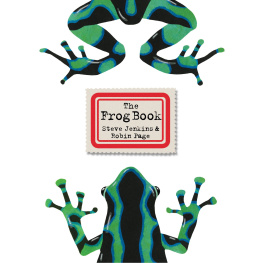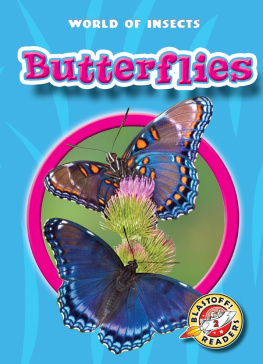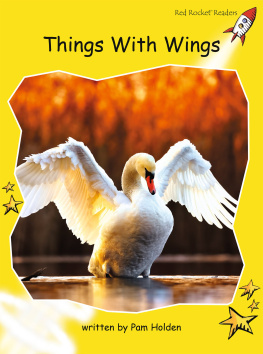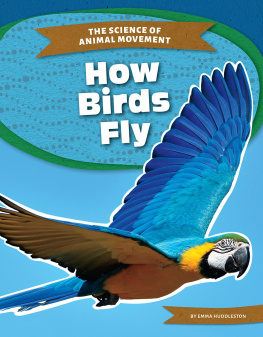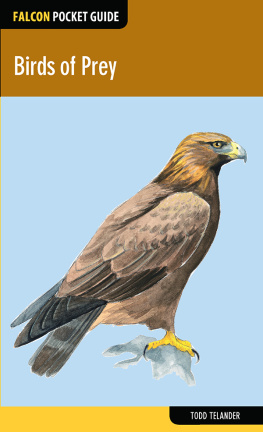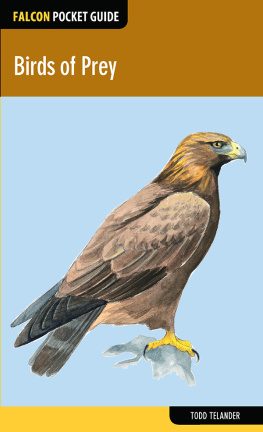
ANIMALS IN
FLIGHT
STEVE JENKINS & ROBIN PAGE
HOUGHTON MIFFLIN COMPANY BOSTON


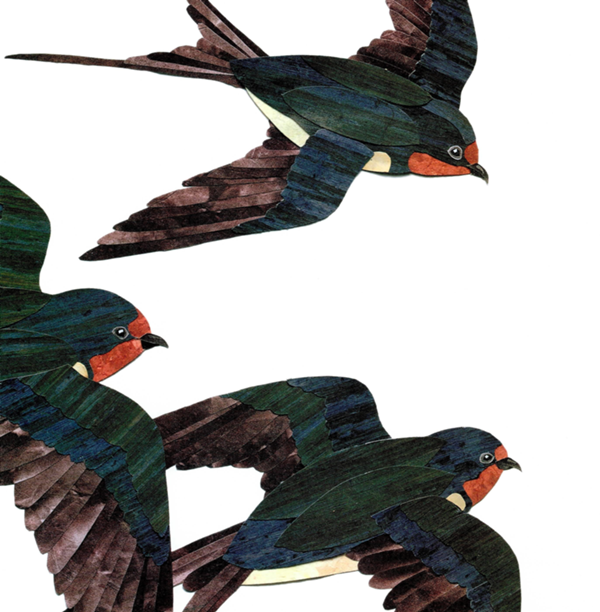
Imagine being able to fly! Soaring, swooping, diving, or hoveringso many animals are able to do what we can only dream about. How do they do it? When, and why, did they take to the air?
The barn swallow, a fast and graceful flyer, spends up to eighteen hours a day in the air.

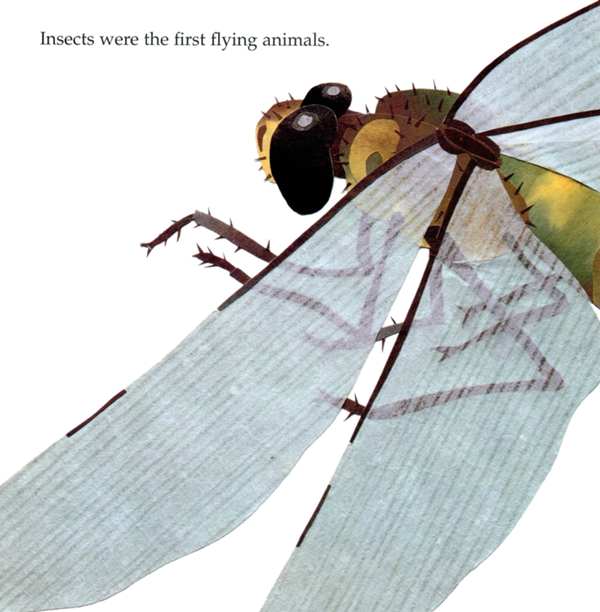
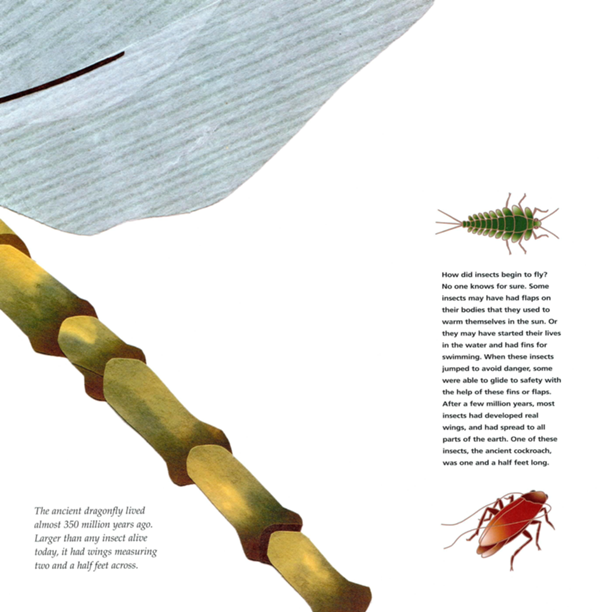
Insects were the first flying animals.
The ancient dragonfly lived almost 350 million years ago. Larger than any insect alive today, it had wings measuring two and a half feet across.
How did insects begin to fly? No one knows for sure. Some insects may have had flaps on their bodies that they used to warm themselves in the sun. Or they may have started their lives in the water and had fins for swimming. When these insects jumped to avoid danger, some were able to glide to safety with the help of these fins or flaps. After a few million years, most insects had developed real wings, and had spread to all parts of the earth. One of these insects, the ancient cockroach, was one and a half feet long.
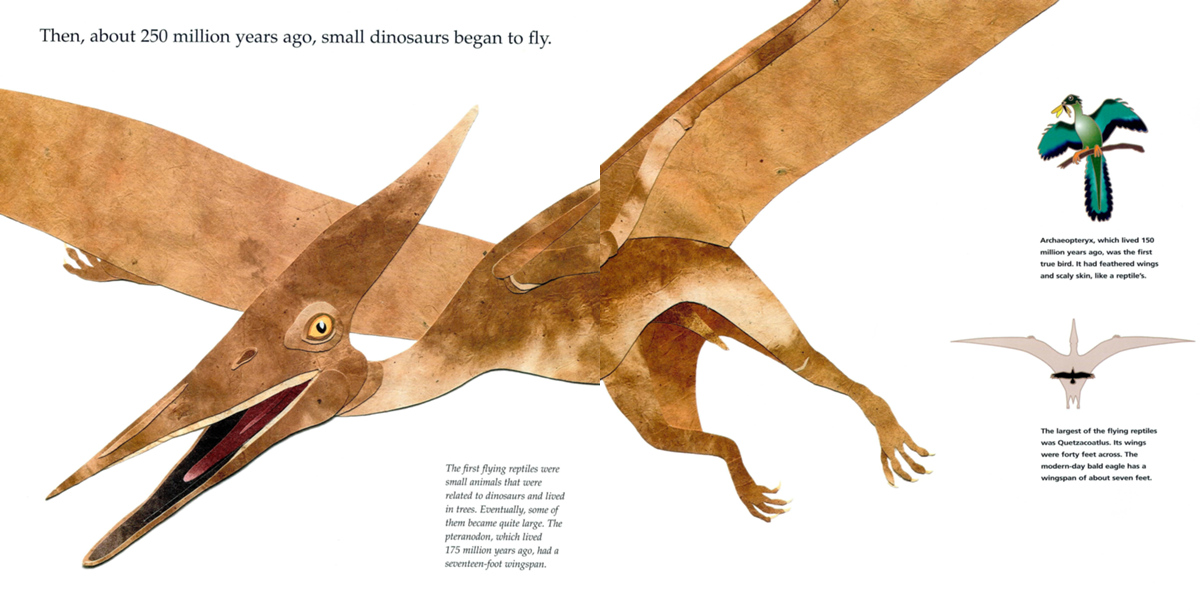

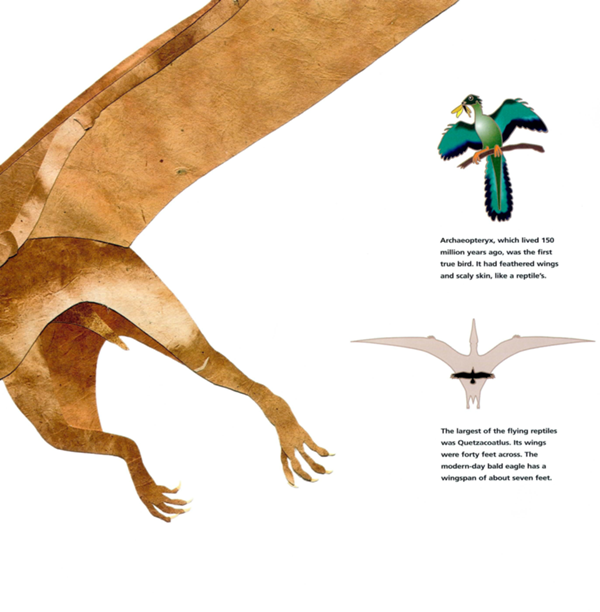
Then, about 250 million years ago, small dinosaurs began to fly.
The first flying reptiles were small animals that were related to dinosaurs and lived in trees. Eventually, some of them became quite large. The pteranodon, which lived 175 million years ago, had a seventeen-foot wingspan.
Archaeopteryx, which lived 150 million years ago, was the first true bird. It had feathered wings and scaly skin, like a reptile's.
The largest of the flying reptiles was Quetzacoatlus. Its wings were forty feet across. The modern-day bald eagle has a wingspan of about seven feet.
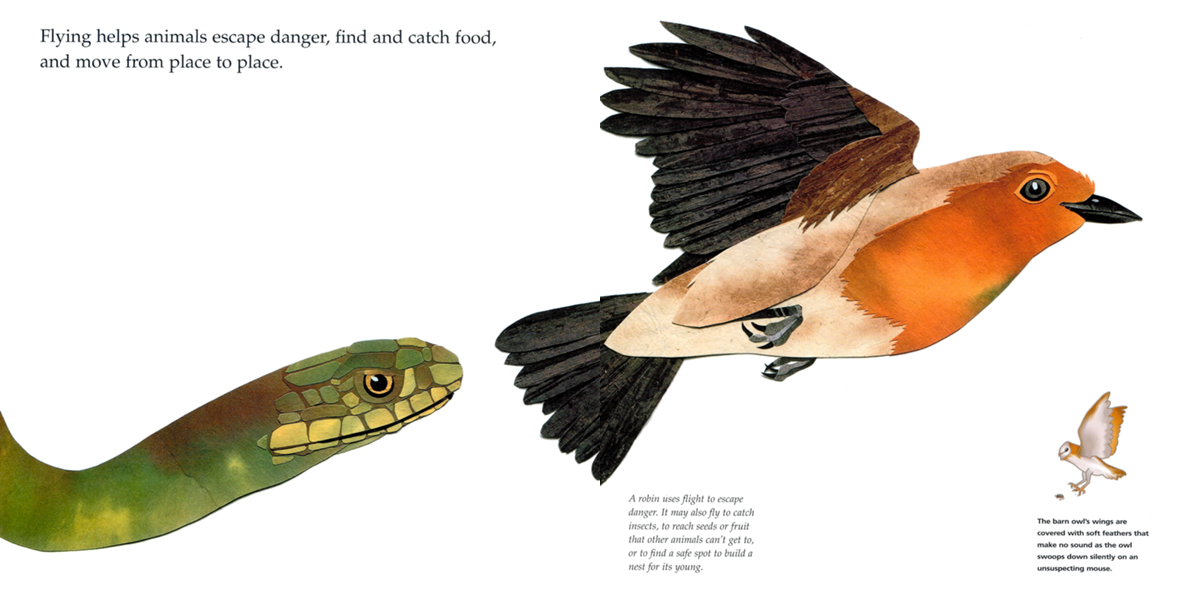
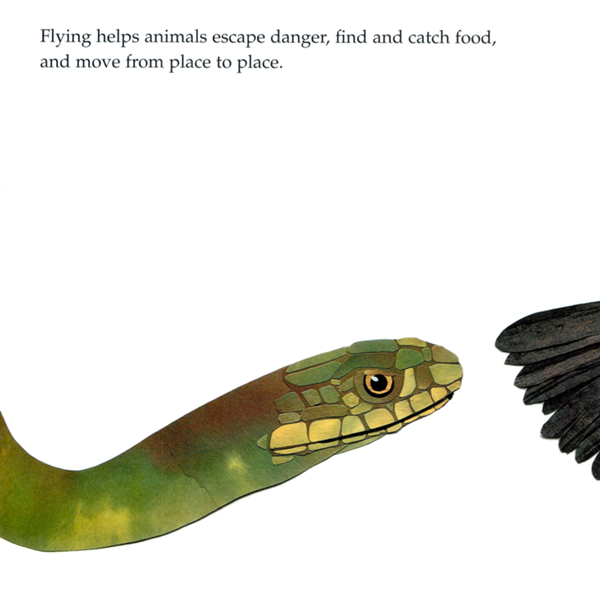
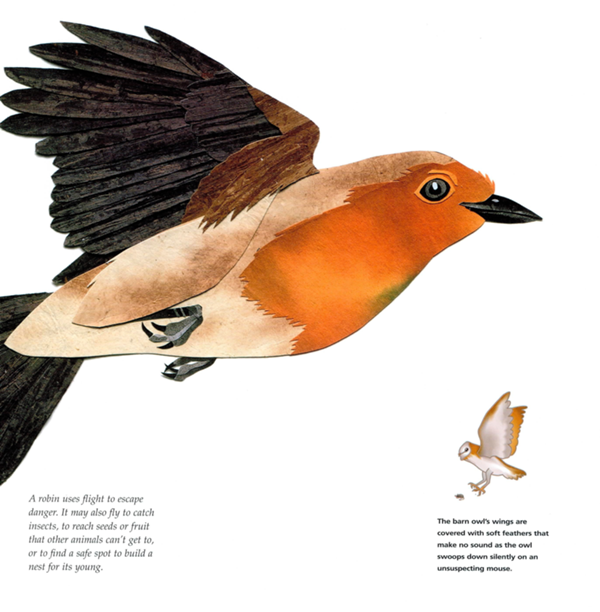
Flying helps animals escape danger, find and catch food and move from place to place.
A robin uses flight to escape danger. It may also fly to catch insects, to reach seeds or fruit that other animals can't get to, or to find a safe spot to build a nest for its young.
The barn owl's wings are covered with soft feathers that make no sound as the owl swoops down silently on an unsuspecting mouse.
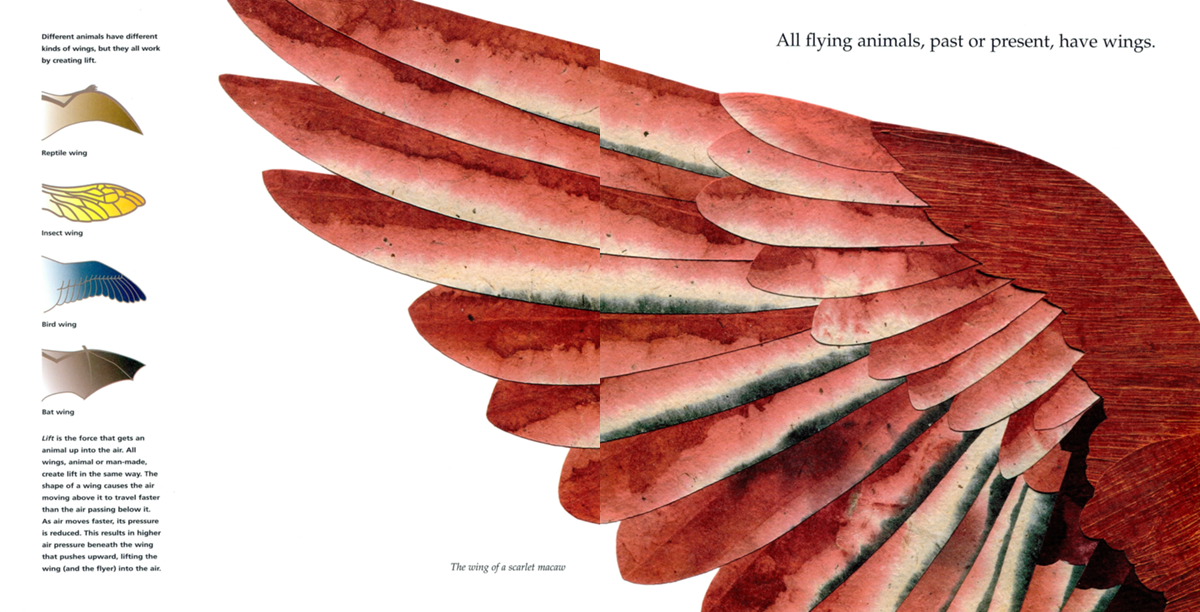
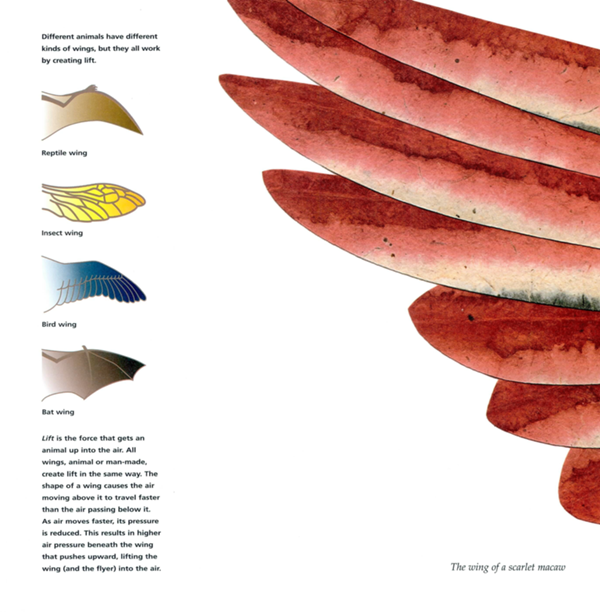
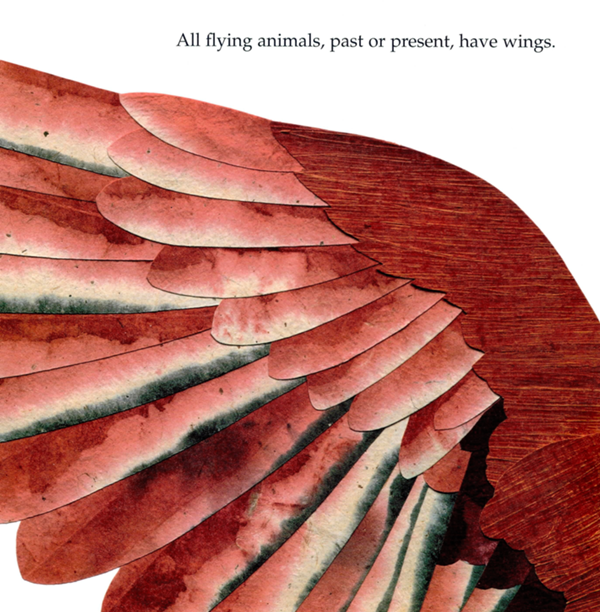
Different animals have different kinds of wings, but they all work by creating lift.
Reptile wing
Insect wing
Bird wing
Bat wing
Lift is the force that gets an animal up into the air. All wings, animal or man-made, create lift in the same way. The shape of a wing causes the air moving above it to travel faster than the air passing below it. As air moves faster, its pressure is reduced. This results in higher air pressure beneath the wing that pushes upward, lifting the wing (and the flyer) into the air.
The wing of a scarlet macaw
All flying animals, past or present, have wings.
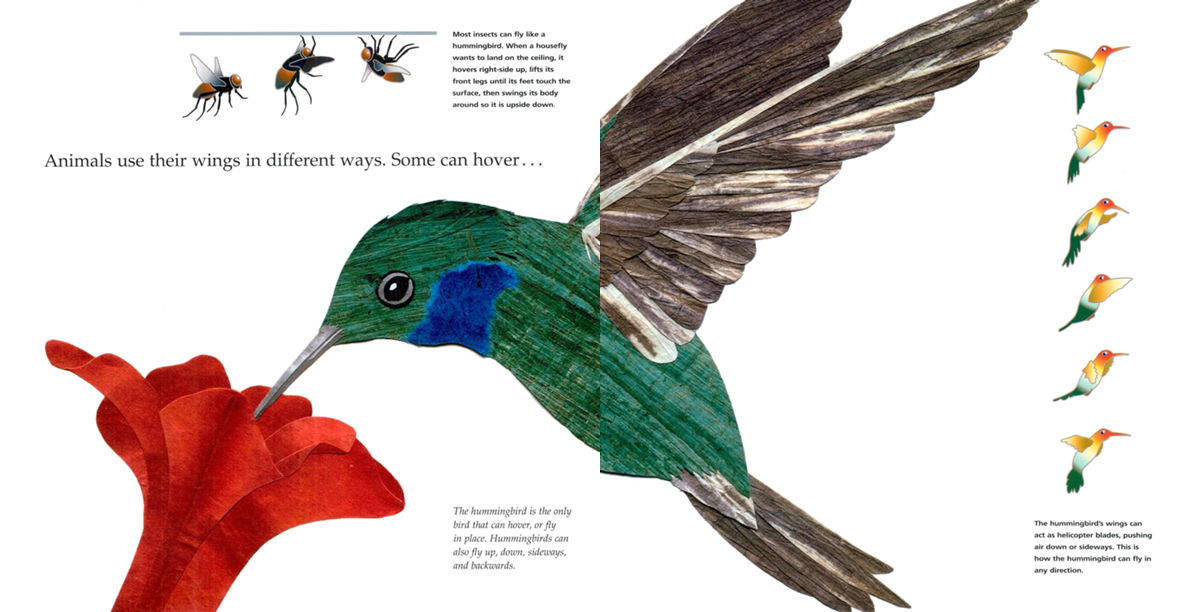

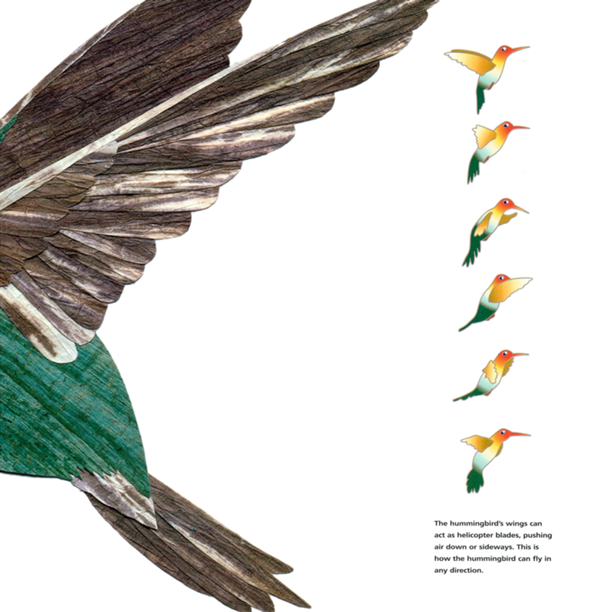
Most insects can fly like a hummingbird. When a housefly wants to land on the ceiling, it hovers right-side up, lifts its front legs until its feet touch the surface, then swings its body around so it is upside down.
Animals use their wings in different ways. Some can hover...
The hummingbird is the only bird that can hover, or fly in place. Hummingbirds can also fly up, down, sideways, and backwards.
The hummingbird's wings can act as helicopter blades, pushing air down or sideways. This is how the hummingbird can fly in any direction.
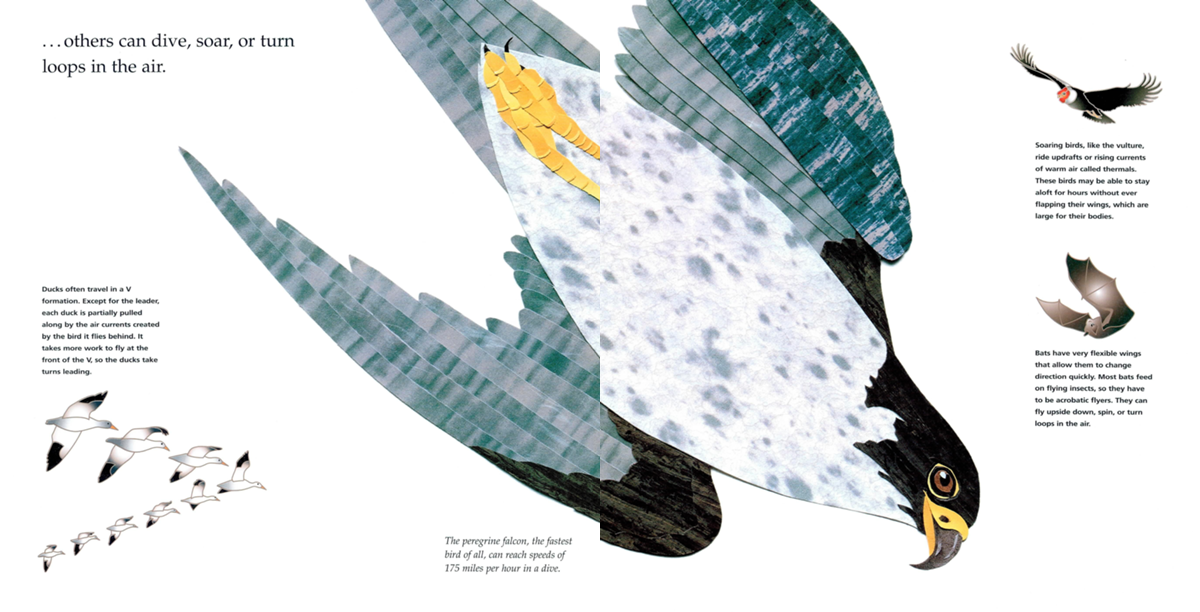


...others can dive, soar, or turn loops in the air.
Ducks often travel in a V formation. Except for the leader, each duck is partially pulled along by the air currents created by the bird it flies behind. It takes more work to fly at the front of the V, so the ducks take turns leading.
The peregrine falcon, the fastest bird of all, can reach speeds of 175 miles per hour in a dive.
Soaring birds, like the vulture, ride updrafts or rising currents of warm air called thermals. These birds may be able to stay aloft for hours without ever flapping their wings, which are large for their bodies.
Next page

